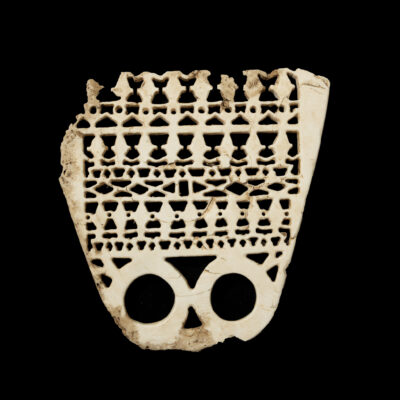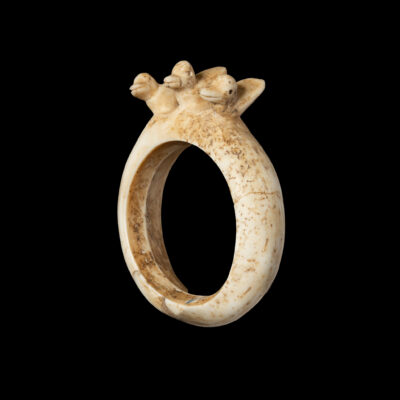COLLECTION
Solomon Islands Barava
$8,000.00
An exceptional “museum quality” Solomon Islands “BARAVA” Clam Shell Plaque.
Size :- Height 10 in / 27 cm Width 7 in / 17cm Thickness 0.5 in / 1.5cm
An exceptional "museum quality" Solomon Islands "BARAVA" Clam Shell Plaque.
These very rare, highly intricate, beautiful, treasured collector's items "Barava" are an ancient, traditional form of what today we would classify as a "binding, legal contract document. They were also a statement of wealth, ownership and identity and respected as sacred, therefore they were kept in the safety of the, Initiated men's - "Sacred, Men's House" - the "Tambu (Forbidden House) House", within the village. Baravas were carved out from semi fossilized, giant clam shell, (the Tridacna Gigas Clam shell), and this ancient tradition has only been found in the Western region of the Solomon Islands. This ancient artwork skill has been lost over the the last generations thus adding to the scarcity and great value. *See below how they were carved.
Barava's were made as a traditional form of a bonding together as a legally binding Contract for matters relating to Land Ownership Titles, hunting areas, coastal fishing rites and also for marriages from the village Chief's children between two different villages , thereby uniting the two villages.
This beautiful , intensely detailed Barava depicts the joining of different families or different villages, joining them together legally for ownership of land or hunting area.
The making of a Barava was a very lengthy process due to the clamshell material and without any modern day tools to assist. The location of these semi-fossilized shells was only known to a very few tribesmen who kept the exact location in mystery. They were found high up in a mountain quarry, Mt Kela on Ranongga Island, at 2,283 feet above sea level, fossilised from thousands of years ago when the region was under the sea before being pushed up high from earthquakes and volcanic action.
Reference - Abstract titled Barava ; Land of Title Deeds in Fossil Shell Western Solomon Islands, by - Rhys Richards & Kenneth Roga - Cultural Affairs Officer in Gizo, Solomon Islands .Publication -Tuhinga. Records Museum of New Zealand Te Papa . Issue 15 2004. In which was stated that the researchers Richards and Roga in 2002 spoke directly with Chief Lezin Betekera of Ombombulu, were informed by the Chief in 2002 that no one has witnessed the traditional making of these sacred plaques. The information had been passed on purely by mouth since before his grandfather had been born and that the art skill had died since those many generations ago. He was told that small holes in the clamshell were drilled with simple hand made drills (called Pisu Mongo in their native tongue) . These simple drills were made from local timber and fitted with a bow which was then operated by rubbing both hands together around the drill stick which was connected to part of an arial root from a bush creeping plant called "Asama" in local language. This part of an aerial root was coated in damp sand to make friction resulting in cutting of the shell. Abrasive sharks skin strips with its finely abrasive surface were used for smoothing the rough surfaces after the cutting of the shapes. Chief Lezin Betekara in 2002 told the two researchers that his grandfather had told him that the carving of a Barava was a very tedious task which took a similar time as it takes for a coconut to grow from a pod into a fruit bearing tree (approx. around 25 + years).
Size :- Height 10 in / 27 cm Width 7 in / 17cm Thickness 0.5 in / 1.5cm
Additional information
| Weight | 1.2 kg |
|---|---|
| Dimensions | 27 × 17 × 1.5 cm |






